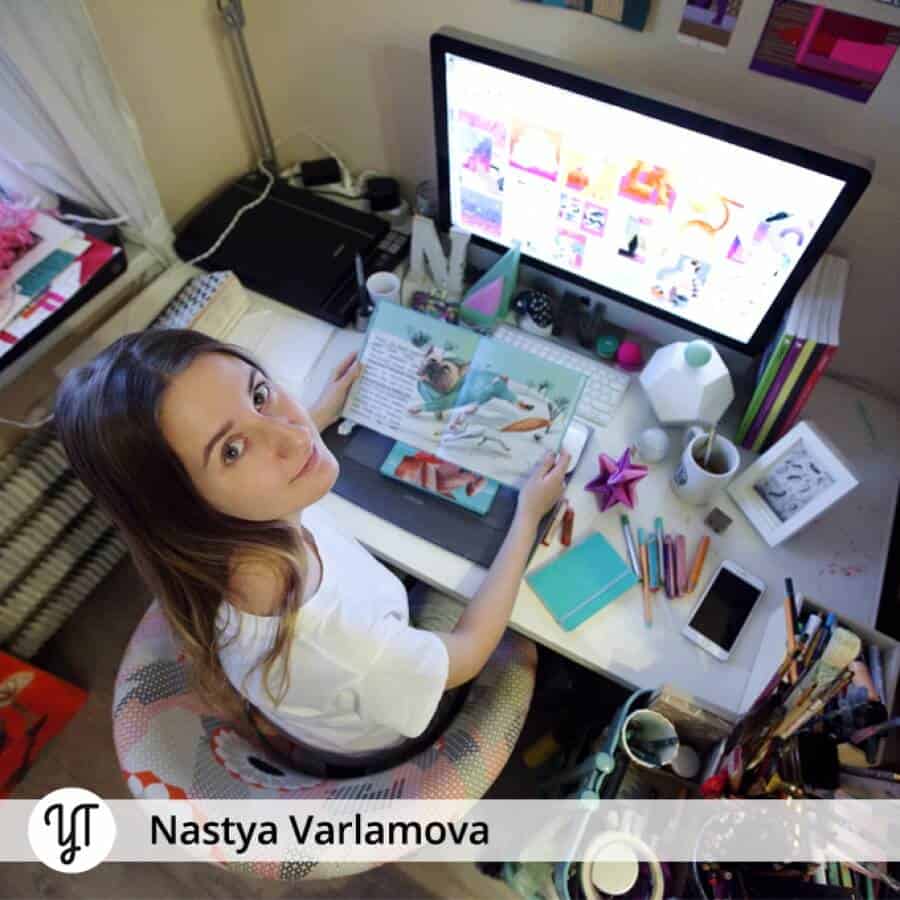Nastya Varlamova is the most outstanding example of the modern illustrator. She is young, talented, recognizable, brave, and incredibly popular. Every day, Nastya inspires thousands of subscribers with the illustrations she posts on Instagram. And she is doing everything at the right time! She publishes books, teaches at the British School of Design in Moscow, and creates new projects. We asked her about the life of a young artist in Russia and about the “tools” one should use in the search for creative work.
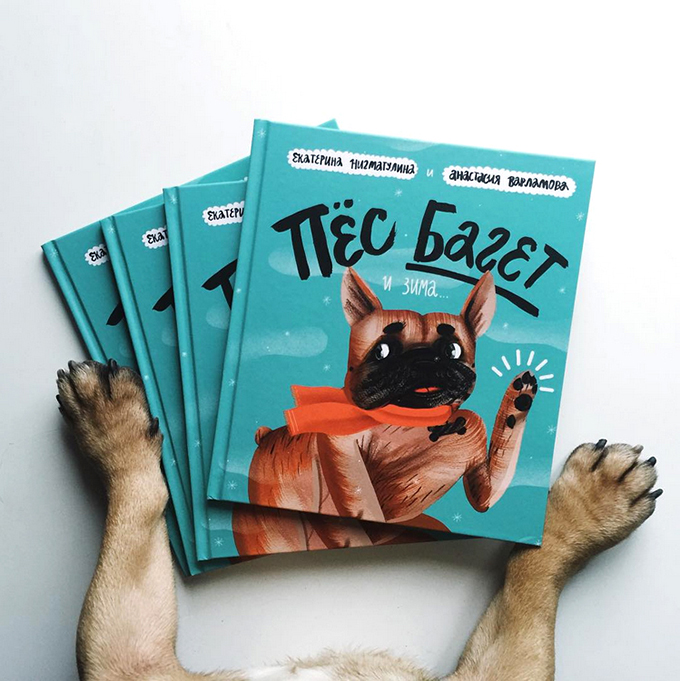
Tell us, Nastya, where did you study to become an illustrator?
I studied at the British School of Design in Moscow, my course was called Illustration Graphic Design, and it lasted for four years. Concurrently, I studied at the extramural department of the Sholokhov Moscow State University for Humanities, taking courses in visual arts. Before that I completed an apprenticeship in the art school as a “makeup artist”, and worked for five years at the Moscow Operetta Theater.
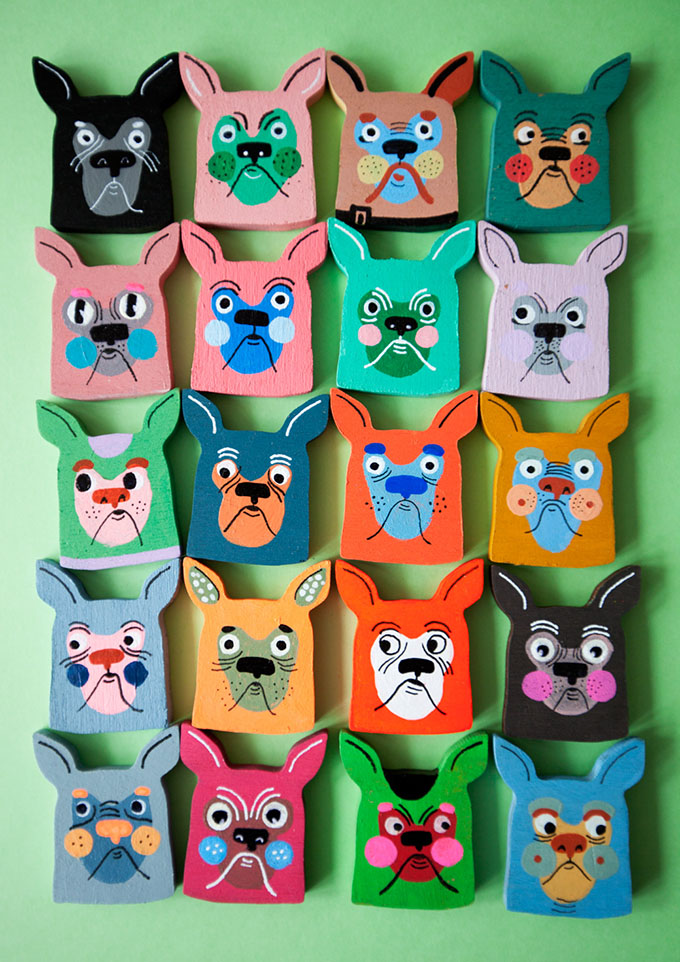
In other words, you had a solid academic background before enrolling in the illustration course. Tells us, is it possible to become a professional and popular self-taught illustrator?
In my opinion, it is impossible. In the course of formal studies you are given knowledge which you should be able to apply in the professional sphere, such as project presentation, page makeup, and preparing layouts. Nowadays, it is not enough just to be able to draw something beautifully and finely. You have to cooperate with the customer, to organize a post-production process, to “brush” your drawing using editing tools, to know how your product will look once it is printed out. Illustration is not just a framed picture; it is a project that will be replicated in a magazine, a book, or on an advertising poster. Therefore, you have to know how every printing color works, how those colors combine with each other, and which sort of paper will be more appropriate in every given case. A self-taught illustrator would have a tough time doing that.
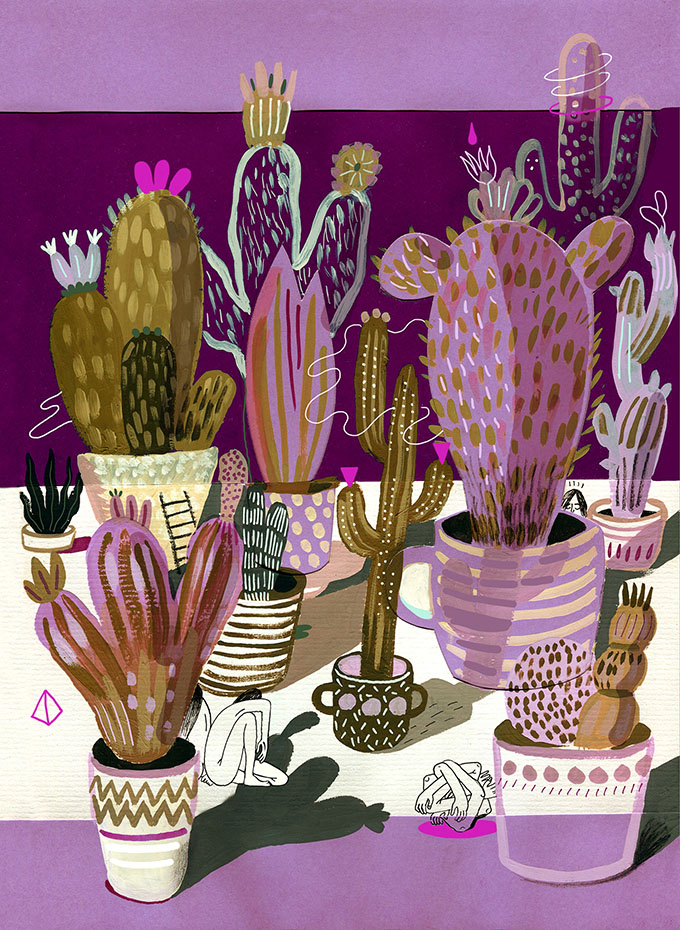
OK, you get an education, what next? All newcomers bring up the same question: where to find a job? How to get your first clients?
It is understandable that a person wants to be assured that after finishing an expensive illustration course he would be able to reap some profits out of it in the future. But no one ever gives you any guarantees! It is not the kind of education one should get dreaming that some day one will be compensated for making that investment. It is not the faculty of economics or law, it is creativity that you want to call your vocation. In Russia, modern illustration is just in the fledging years of development, but that means that there is a rising demand for artists. Therefore, it is quite possible to find a job at any level of complexity or style.
You can start off just by helping your friends. They will certainly need some posters, logos, and corporate designs. At first you will do it for free, but after some time you will gain some experience, as well as build a database of your acquaintances, and then you will start getting your first paid jobs. It is important not only to adapt and to be able to work in this area, but also to learn how to establish useful social connections. Communicate with other people as often as possible!
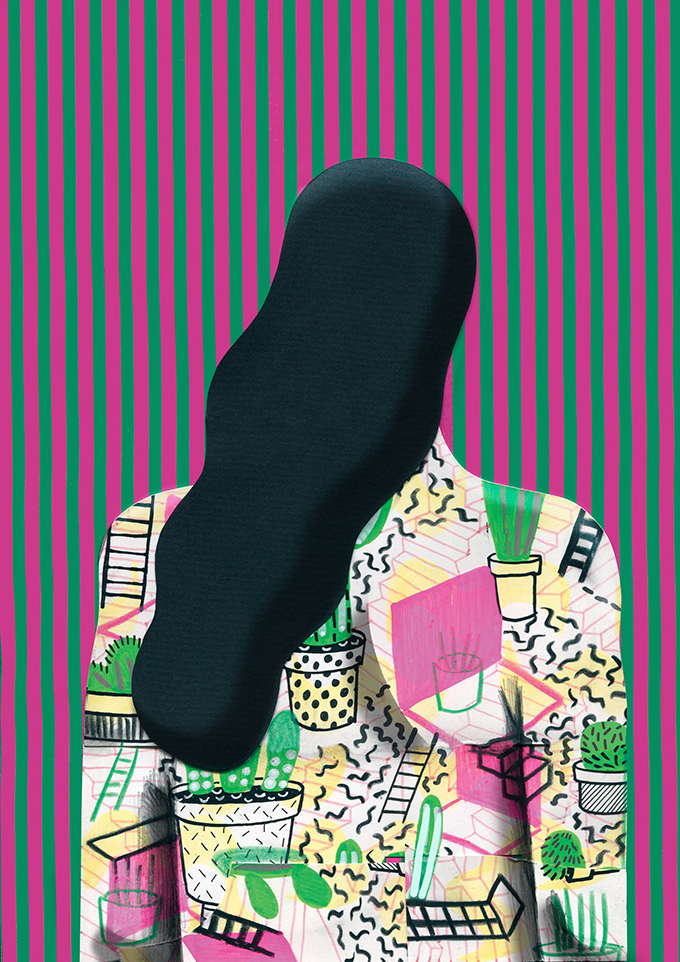
Where did take your first steps in this business? Tell us about the first projects for which you received payment.
It was the series of portrait illustrations for the Onboard magazine, which specializes in snowboards. A friend was working there at that time (that’s what I mean by social contacts, which can always help you out), and he asked me to draw portraits of the riders. Right after that I was offered a job at the Yoga Journal. Frankly speaking, all those illustrations seem ridiculous to me now, but it was a wonderful experience. My current work looks totally different.
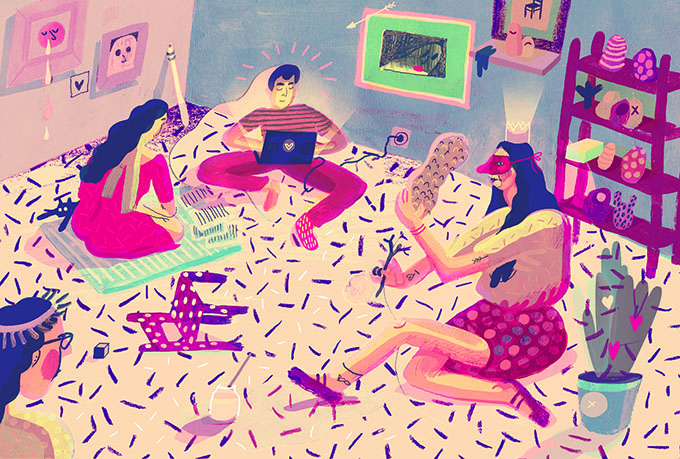
You have a unique style, which is hard to confuse with somebody else’s work. I think that every artist wants to find that.
Novice illustrators are usually pursuing a personal style, believing that it is the most valuable asset they can possess. However, style evolves as the result of daily work, and not vice versa. Many people make a huge mistake, thinking that it is of prime importance to work out a personal style, and only after that can they get down to real work. In reality, everything happens in quite a different way.
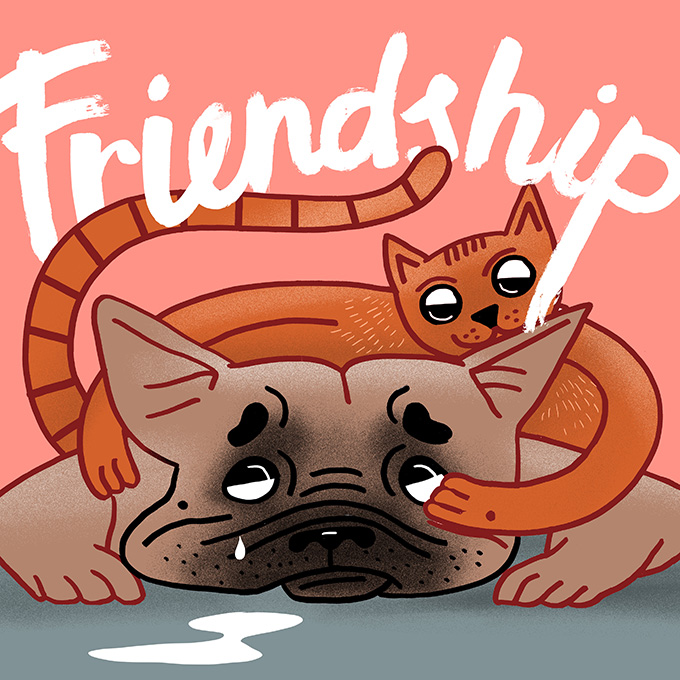
What happens if you become tired and your creative powers are exhausted?
When I feel that I’m getting tired, I start drawing abstract collages. It is my personal method of relaxation and a good way to take my mind off my routine work.
I just take a colored paper and scraps of beautiful stuff that I’ve found and carefully saved, and combine them together, trying to find a balance in color and composition. Those collages have no special meaning; they just help me to relax.
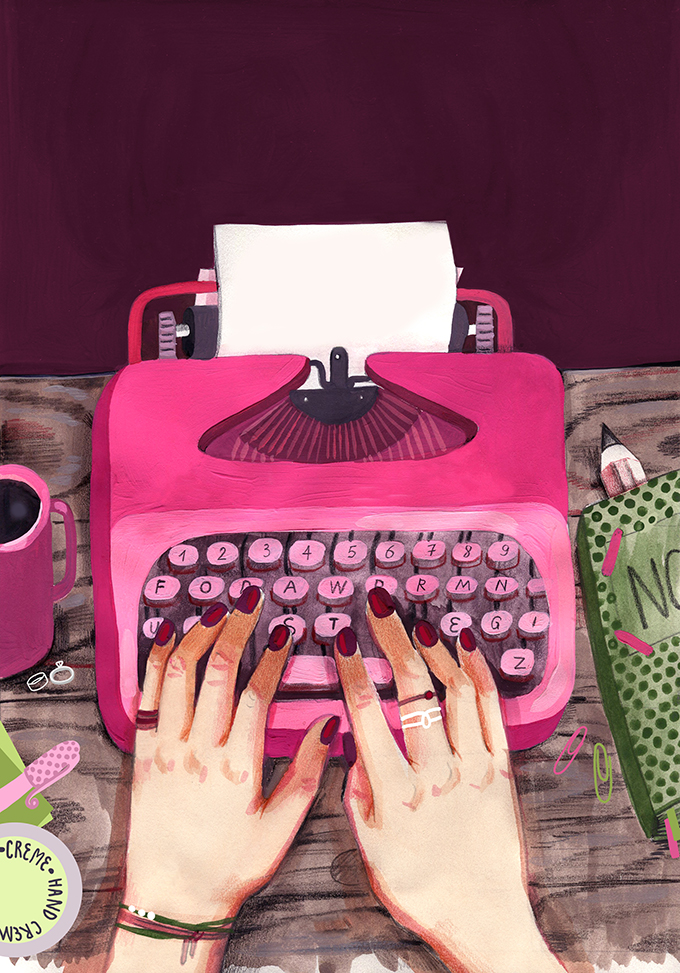
What technique are you using in your illustrations?
It is a combined one. In most cases I use collages made of colored paper, gouache, pencils, liners, and mascara to create illustrations. Then I scan the finished piece and post-process it using Photoshop.
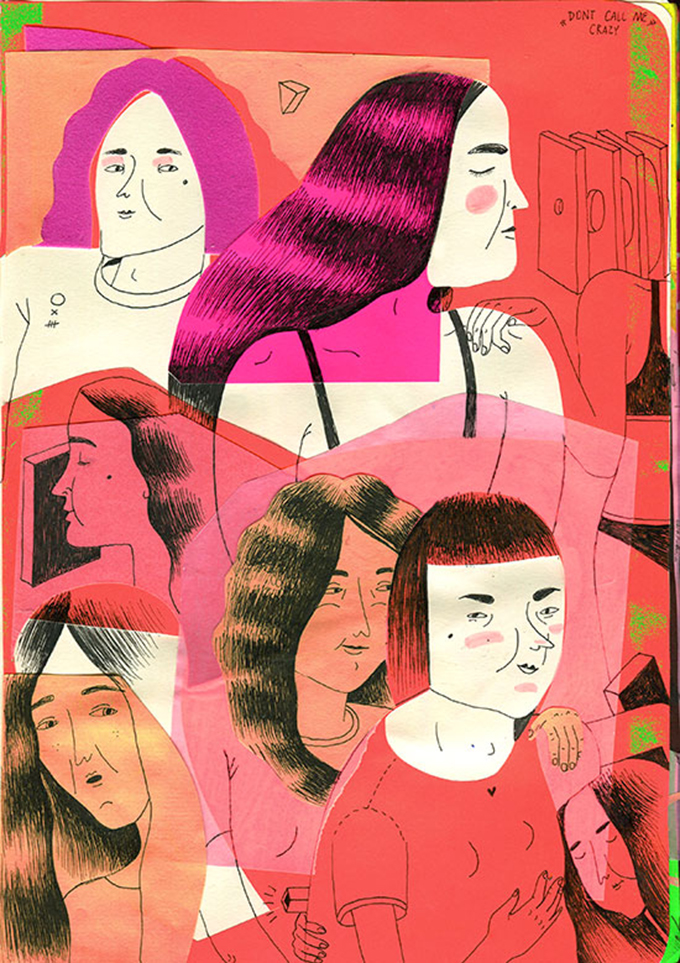
Do you have any favorite illustrators whose style fascinates you?
In recent years, I’ve really grown fond of Jim Houser’s works. He creates installations with different weird animated characters, and I adore the color palette that he uses. The second artist is Tyler Keaton Robins, whom I’ve discovered on Instagram. He creates black-and-white graphics. One day I took my chances and sent him a message with various questions concerning our profession, and he honestly answered all of them, and even shared his impressions about some companies that produce markers. It is so great that nowadays we have an opportunity to communicate with inspirational figures. Back in the old days, no one could even imagine that that would be possible! Now you can send a message to any person, even if he lives on the other side of the globe, and ask personally for his advice. Artists are open-hearted people, so you shouldn’t be afraid to ask them something. Moreover, nowadays there is a powerful base where we can establish such contacts – it is called Instagram. It is also the best platform for showcasing your artistic work!
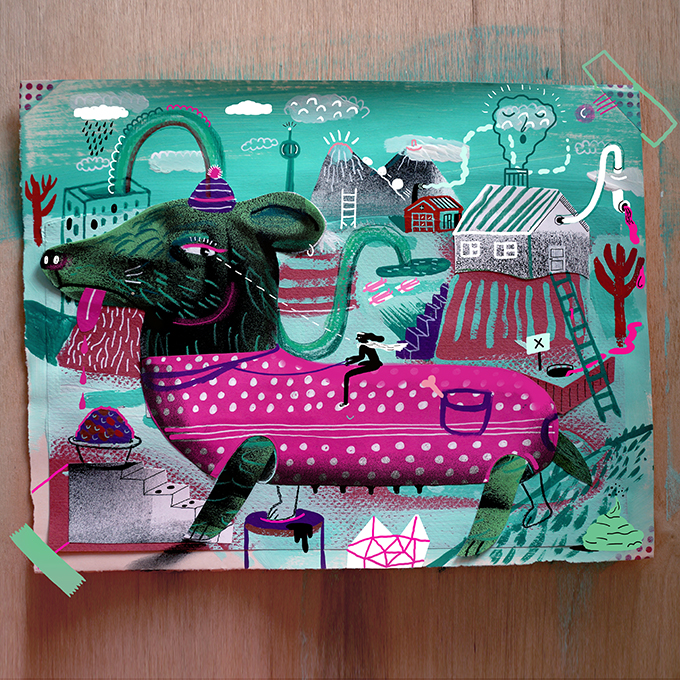
I know that you’ve published your first book, about your dog Baguette, thanks to Instagram. How did it happen?
Indeed, that is the place where I met the writer Katia Nigmatulina. When we got to know each other, she was very inspired by funny stories about my dog Baguette. That’s how the idea of writing our book was born. The project dovetailed with the decision of Katia and her husband to set up their own publishing house and to make this book their first release. It was published with a print run of a thousand copies, and, once again, it has been distributed through Instagram among our established audience.
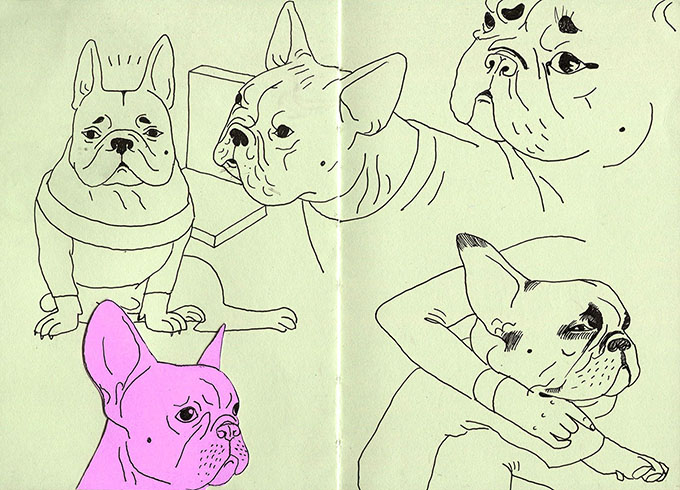
Can you tell us about the cost to produce this book?
The publishing house undertook all expenditures, while I get a percentage of the sales. There are two compensation models in the publishing business, which determine what, and how, an illustrator gets paid for his work. The first one applies when an illustrator is paid the entire compensation for his work up front, and the publishing house buys and uses his pictures for its own purposes. The second one applies when an illustrator gets a percentage of sales after the project has been launched. In our case, we quickly found a common ground and figured out all details. They view this project as a long-term one, and we are going to publish a series of books in the future. The next book will be more voluminous, and it is expected that it will also have an educational component.
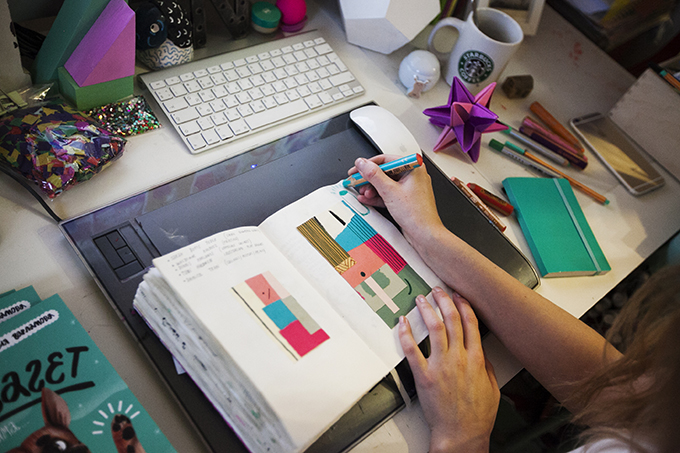
By the way, let’s talk about the education components… How did it happen that after graduating from the British Higher School of Design you began teaching at the very same school?
I graduated with honors from the Higher School of Design, so when the question of finding a new teacher came up, I was the first candidate who was recommended for this position. And I genuinely like to teach. First, it gives me an opportunity to review my work and to systematize my knowledge. Second, I rejoice over the fact that I can be useful to my students. And third, it pleases me a lot to see the results of my work. Sometimes I even like the works of my students more than my own.
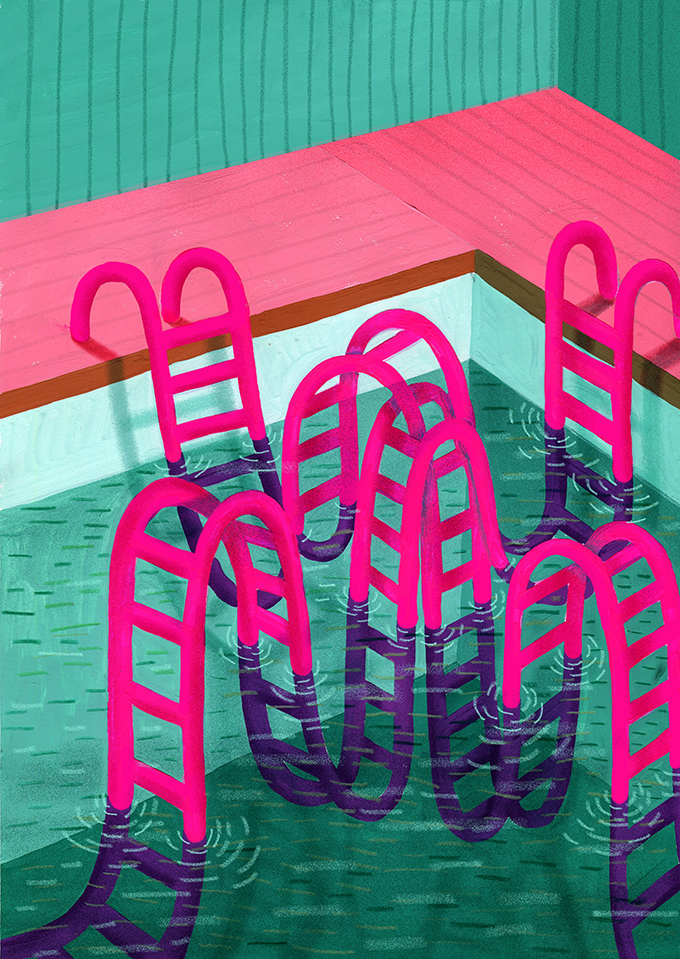
What advice would you give to a novice illustrator?
Take every bit of work you can get and develop your portfolio. For instance, just design packaging for tea. Draw it, print it, make a beautiful photo of it, post it on Instagram, and write that it was you who made this packaging for tea. No one would ever know that it is not real! But at the same time you might get a potential job offer for the same packaging. The main thing is to hold your own!
Photos: Kseniya Segina
Support us!
All your donations will be used to pay the magazine’s journalists and to support the ongoing costs of maintaining the site.
Share this post
Interested in co-operating with us?
We are open to co-operation from writers and businesses alike. You can reach us on our email at [email protected]/[email protected] and we will get back to you as quick as we can.
